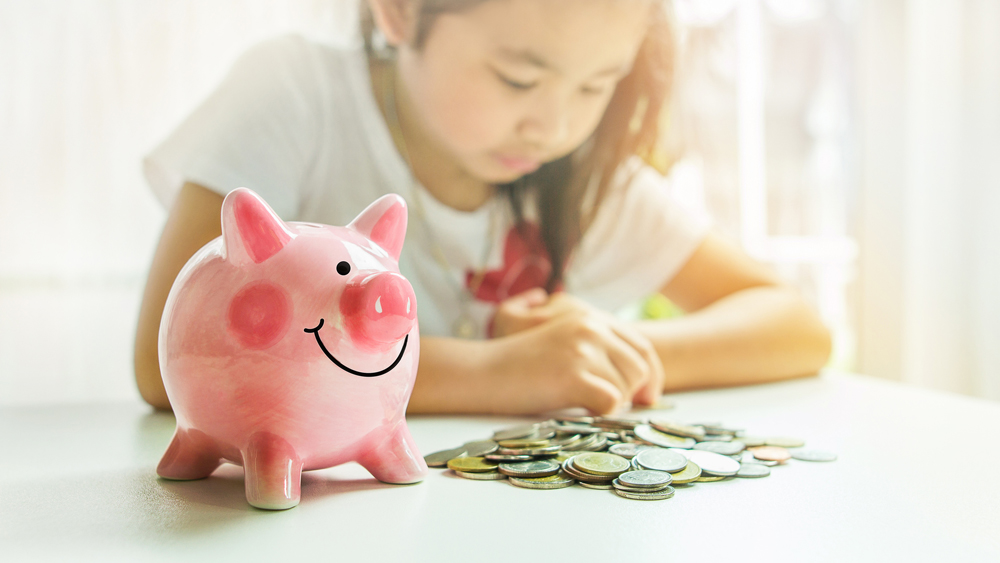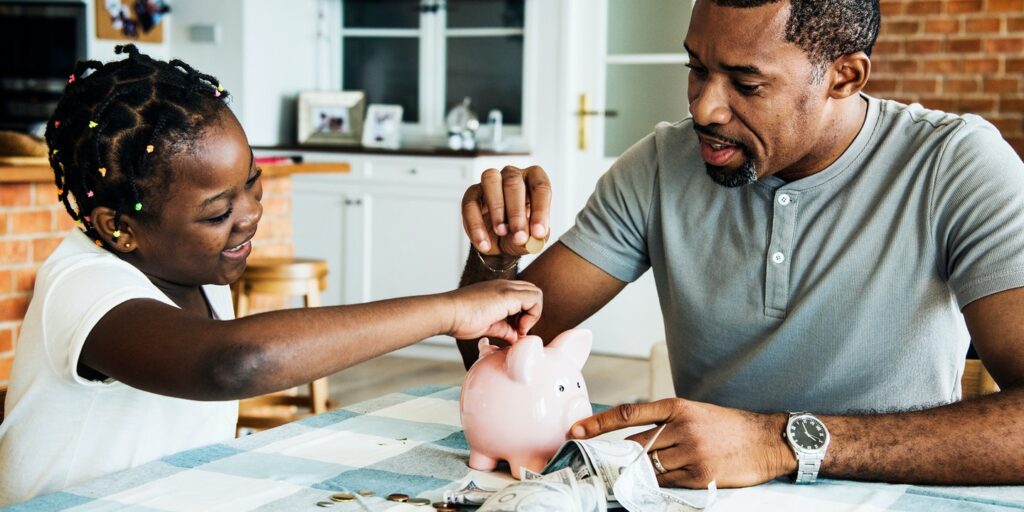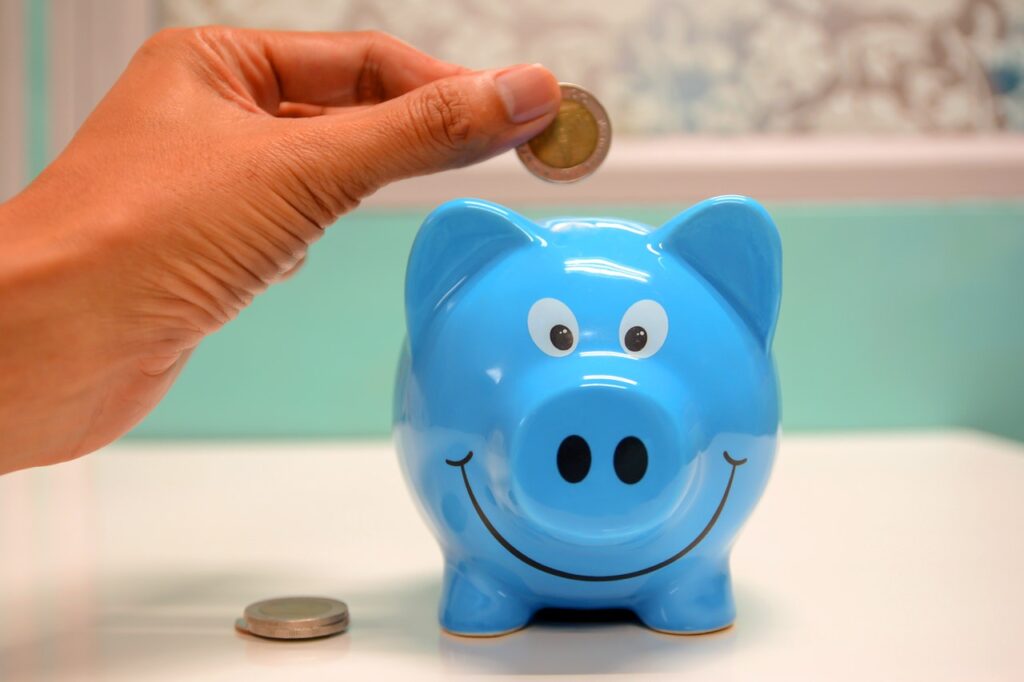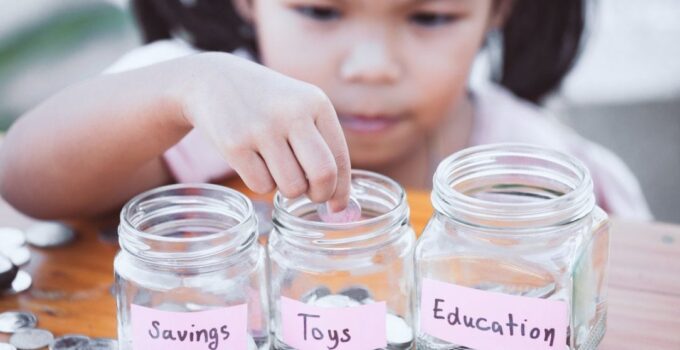It is often seen as the task of the parents to teach their children how to handle money. Learning good habits at a young age has a positive influence on the further development of the young adult and beyond. Dealing with money is important and the same goes for ‘learning young is done old’. But how do you teach your children that money does not just roll out of the ATM? And that saving for later makes sense?
Money does not grow on the trees

Source: pixabay.com
Some children are unaware that money doesn’t just grow on trees. To them, money simply seems to come out of the wall without limits when you insert a debit card into the ATM. With this group of children it is important that you make it clear to them that money is not simply available at all times. However, most children know that their parents have to work to make money or that generating money requires some form of effort. What aspects of money can children understand at what age, and what you can do to make them feel the value of money better? Read this and follow this site for more info.
Awareness is important
From 7 to 8 years old, children are usually aware that you need money to buy something. New toys or an ice cream at the ice cream cart costs money. Children know that some things are more expensive than others and understand that their parents have to work to make money. Large amounts of money are not important for this age group. So it is not necessary to discuss the price of a house to a large construction project in the city. You better address these topics at a later age.
Talk or do?

Source: montrealfamilies.ca
Talking about money with your children is a good way to introduce the concepts of money and value. The group aspect can also yield interesting results. Every child has a completely different background. A second part is doing. Experiencing for yourself when something is (too) expensive can leave a strong impression and ensures that children learn faster. That is the best way to teach your children on how to handle money. It is also the basis for learning to save.
What about pocket money?
About three-quarters of kids over 12 receive pocket money. The exact amount may vary, depending on what the children have to pay with it. It is unanimously started with a modest amount. Pocket money is an ideal instrument for financial education. All parents should know that it is important to make good agreements, so that the children clearly know what the pocket money is for (only extras or also food and clothing?) And why. This of course depends on the age and character of the child and family situation.
What about teenagers?

Source: sheknows.com
Independence and self-reliance among teenagers should be encouraged, but only if the skills are sufficiently developed. This applies to both learning to cycle and managing money. So dare to adjust your children or intervene where necessary. Young people use money more consciously when they are advised to think about their purchases. It may be useful to talk to the parents as well. An unlimited budget at a young age can seriously trouble a teenager later on, when it becomes clear that money is not always just available. It is therefore recommended to limit the amount that can be collected with the bank card.
Let them figure it out for themselves
A fun exercise to do with teens is to give them a budget or example for a mobile phone (or other things that are very relevant at that age). Give them an amount and ask them to determine the best purchase. They can then present them and discuss on what and why they have made this decision. Two birds with one stone: learning to research the best option and learning to stand up for what they want.
Let them make mistakes

Source: calstate.aaa.com
Financial education is a learning process, and that includes making mistakes. It is important that it is an accessible learning process, where students feel comfortable making mistakes and where parents can also see that some things may need to be redefined. It can happen that parents miscalculate and that certain things are more expensive than expected. Comparing what peers get (and what to buy with it) can provide a good guideline for parents to make a correct estimate, although it is of course entirely up to them how they implement this information. Limiting the budget (or the limit on the bank card) keeps errors under control without disrupting the learning process. Can the child not accept responsibility? It occurs. Draw up some basic rules, make clear agreements and gradually increase the pocket money.
Money for chores
Money for chores is a matter for parents to decide. A difficult issue depending on the situation. Usually the guideline is used to pay children for chores and tasks for which you hire someone else, such as painting walls, pruning in the garden or washing the car. It is very important here that the amount remains modest. Too much money for chores can cause teenagers to overestimate a starter wage. It may be useful to alert parents to this.
Encourage teens to look for a student job can also be an effective way to help them understand the value of money. Moreover, it gives them a sense of independence that can have a positive influence on their self-confidence. It feels good for you to make some money. Discuss with your children what their rights are as a student to avoid being exploited by the employer. Here too you can encourage to save at least part of the amount.
Teach them to save

Source: pexels.com
Start a joint savings project in which at the end of the predetermined period, the saved money is used to do a leisure activity together. Consider, for example, a visit to the zoo, an exciting movie in the cinema or a trip to the sea. Or save for a nice accessory that can be used by everyone in the home. This way the children can learn to save in a playful way.




